Backspin Batting Tee: Best High School Baseball Or Softball Professional Hitting Trainer For How To Hit Line Drives Instead Of Ground Balls | Reviews & Drills
Discover the Backspin Batting Tee, which is the best high school baseball, fastpitch, and slow pitch softball professional hitting trainer for learning how to hit more line drives instead of ground balls. See how it works in this drill review…
Backspin Batting Tee: The Quickest & Easiest Way to Drive the Ball Using A Baseball Hitting Tee
This is the first in a 3-part baseball hitting tee interview series…
- PART-1: [YOU ARE HERE] BackSpin Batting Tee: The Ugly Truth Interview with Taylor Gardner
- PART-2: Why I Ask Questions (And Maybe You Should Too) Interview with Speed Coach Lee Taft, and
- PART-3: – Improve Your “BatterZeye” In 4-8 Weeks, Interview With KC Carswell
One of the most frustrating things for coaches I’m in touch with (myself included) is finding minds that think alike when it comes to applying human movement science to hitting.
In other words, how do we separate the “weeds” from the grass? Below is an interview I did with one of the three hitting and movement experts, Taylor Gardner and his innovative batting tee.
First a brief introduction…
Taylor Gardner is the inventor of the Backspin batting tee (I carry the Backspin Tee at TheStartingLineupStore.com), that received “Best In Show” Awards at the 2015 American Baseball Coaches Association (ABCA) Convention in Orlando, Florida. The baseball hitting tee concept is really simple really, practice hitting the bottom half of the ball (see video above).
At the convention, Taylor had a coach come up to his booth, take swings off his Backspin batting tee, and said that it was nearly impossible to swing “down” on the ball, because of the batting tee design.
SCIENCE-BASED TRAINING:
Improve your hitting strategy dramatically by applying human movement principles.
Learn not only how and what to train but also the science behind the methods.
The “ugly truth” about the batting tee?
…If youth hitters aren’t coached properly, then they’ll default to hitting the top half of the ball, to avoid knocking the tee over. Taylor’s Backspin baseball hitting tee turn this ugly truth on it’s head…literally 😛
Not only did Taylor breath new life into the batting tee, but he’s a student of hitting. He uses human movement science like we do. I met him on my Facebook fanpage, and after a couple interactions, I had to interview him for the HPL blog…
Taylor Gardner BackSpin Baseball Hitting Tee Interview…
If you were to train me for four weeks for a HUGE tournament and had a million dollars on the line, what would the training look like? What if I trained for eight weeks?
TG: With 4-weeks of training…
…we would have time to adjust any swing path flaws with video analysis so that everyone was seeing the same movements. We would do positional strength test to show if their are any weak points in the swing that might be causing a dropping barrel.
Your grip would be looked at to ensure that at contact both wrist were close to 90 degrees, and then keep that grip (don’t just change it for comfort).
Simple soft-toss from in front would show any basic timing issues, as well as your ability to get in position to the ball on time to use a proper swing path. Bad positioning at landing can cause hitters to change their swings regardless.
I practice a “1st baseman” drill where you train your eyes to step towards a ball before you catch it (Learned from Barry Bonds) to help your body learn how to get to the pitch more efficiently.
Depending on how good your timing, body positions, and swing path were, we could then move onto any movements in the body that might need more exaggeration, for example: if you were very stiff with your legs, and had a hard time getting to lower pitches, we could do variations of tee work and soft toss to exaggerate that one body movement, and these same techniques would apply if you had connection problems with your arms, hands, head movement, etc that may need to be fixed more quickly.
After your technique is sufficient in the 4 week time frame, I would have you learn how to “time” a pitcher and practice different fastball speeds. For example: if you are facing mostly 80mph pitching and slower, we would practice speeds of batting practice (with the new exaggerated movements now set) that were no quicker than .47 seconds out of the pitcher’s hand to the front of the plate (a simple stopwatch would get us close).
If you were facing 90mph then we would train your stride timing to adjust to .40 seconds, but no faster. Pitcher’s don’t accidentally throw their fastest pitch 10mph faster….In the 4 weeks we would conquer the technique of the swing first before seeing live pitching. You came to change your swing, and 4 weeks is plenty of time to make physical adjustments, the rest of the time would be focused on the timing and reaction to positions in the zone.
If I had 8-weeks with you,
…we would take the same approach, I don’t believe their are quick fixes, unless your swing is already close to doing the right movements, but I would ask you questions about the approach at the plate, and we would keep it as simple as possible. The pitcher throws his fastball 70%+ most of the time, so you can trust that that is what you will see.
You can always buy time (wait) in the swing, but you cannot speed up faster than your body will allow. You would learn to set your timing approach up to hit that particular pitcher’s speed, then time your stride accordingly. Some hitters need to wait longer, or start sooner depending on their tendencies.
Your set up (assuming isn’t an issue) would be able to swing level to a high pitch (considered a pitcher’s mistake in Pro ball) because it is the easiest pitch to get to the bottom half of the ball, and would learn to adjust to the height adjustment of off speed and swing to the pitch accordingly.
Every physical movement that would be instructed would have your own style to it. There is no cookie cutter swing, only movements (and maybe some variations of those movements) that were backed by facts and studied knowledge that can be performed by the human body.
Getting on path with the pitch, hitting the middle/bottom half of the ball at a contact point that is proven for max energy connection into the ball would be taught. How high or low you consistently hit balls (angles) is more important than pulling it or going to opposite field. This has been proven time, and time again.
What makes you different? Who trained you or influenced you?
TG: Matt Nokes (Silver Slugger Award Winner, New York Yankees) Boots Day (Montreal Expos, and knew Ted Williams), Jarrett Gardner, Professional Pitching Coach
What are your favorite instructional books or resources on the subject? If people had to teach themselves, what would you suggest they use?
TG: DVD-Pyramid Of Hitting. Training tool-The Back Spin Batting Tee.
What are the biggest mistakes and myths you see in hitting? What are the biggest wastes of time?
TG: Hit the top of the ball to make it rise with backspin. Soft-toss from behind the hitter. Your hips are your main source for power. Quick hands. Pulling with the bottom hand, and pushing with the top hand. You can stay “through” a ball longer if you try, the ball only stays on the bat .0007 seconds, no matter how you hit it. Swing down and through a ball. Keep your hands inside the ball. Get your foot down early. You have to have a straight front leg to hit. You have to rotate your back foot for power. “Don’t worry about timing, just react to the pitcher.” Foul off offspeed and wait for fastball. They all are a waste of time, and I can explain how.
…
Thank you Taylor!
Here’s how you can stay updated with Taylor Gardner and his BackSpin batting tee:
- I carry the Backspin Batting Tee at TheStartingLineupStore.com
- Website: BackSpinTee.com,
- “Like” on Facebook,
- Follow on Twitter, and
- Subscribe on YouTube.
Please direct baseball hitting tee questions and comments below…
- Fix Late Swings Fast: 2025 Pitch Recognition & See-Decide-Swing Training for Youth Baseball Power Hitters - October 6, 2025
- Safe Youth Weighted Bat Training: Proven Overload/Underload Drills to Increase Exit Velocity in Games Starting Tonight - September 29, 2025
- AI Coaching Course 2025: Youth Baseball & Softball Practice Plan + Off-Season & In-Season Workout Builder Fast - September 23, 2025

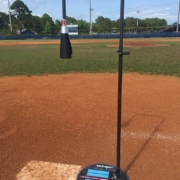

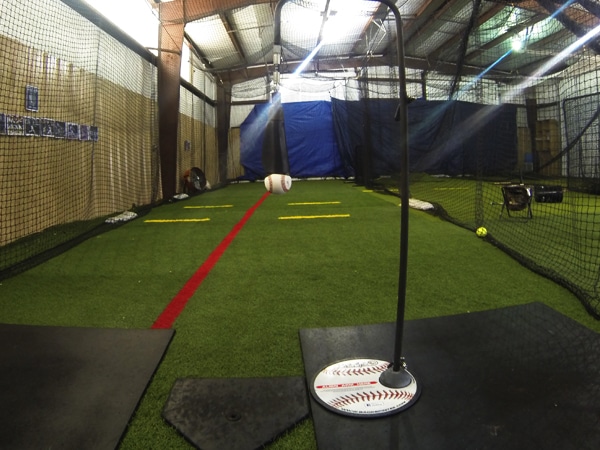
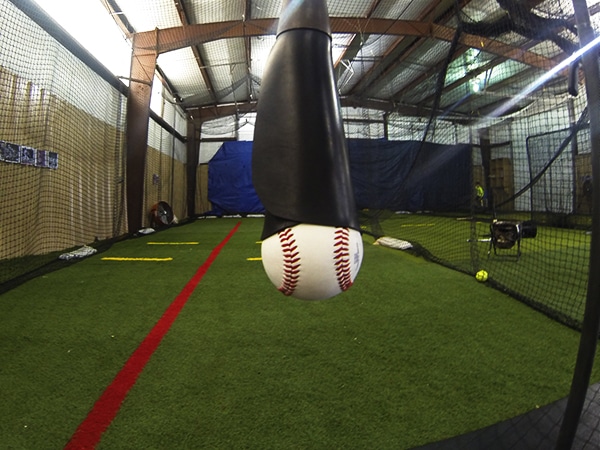

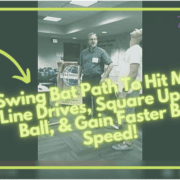
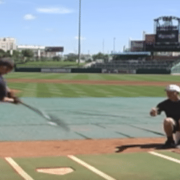
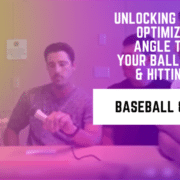

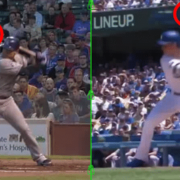
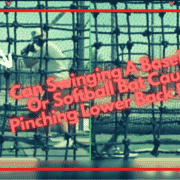
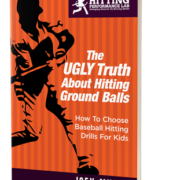




Looks and sounds like a great product but $400 seems pretty steep!
I agree $400 bucks is steep. A lot of tee work is done at home and it is not even practical for parents to spend that much on a tee.
What keeps the ball in place from falling out? Is there a separate ball holder for softballs? Does this ball holder hold up well?
His answer to the last question (about myths and misconceptions) has me scratching my head. Those are some sweeping and ‘interesting’ points he’s making. Could you have him elaborate and explain those.
I’ll see if I can get Taylor to address some of you guys’ concerns…
Thank you guys for the quick questions, and yes…$400 is more than a standard tee. But no more than the top of the line bat or glove and this tee was specifically asked to be made out of such durable materials as to never need to be purchased twice by MLB teams, but we are launching a more affordable travel model to the public in time. This is our Pro Model. As for the myths section of my comments, I want to make clear that in general, those statements I referred to are severely over used in the game. In fact, the pro guys I’m around daily strictly enforce not saying those things. When talking about absolute facts of the swings, we also need to talk about absolute facts what the hitter might be needing to try and do, for example: “Get your foot down early” clearly implies the coach wanting the hitter to be “early” on a pitch versus on perfect timing. It’s not that the statement isn’t with good intent, but we have all seen young hitters exaggerate getting their foot down early, and then have to reach or lunge for the ball. 99% of pro hitters get their foot down when the pitch is still around 15 feet in front of them. Not “early”. I had a hall of fame pro ask me if I had ever seen a hitter not have his foot down when they swung…. They get it down on time (technically before contact) but never too early. “Hands inside the ball” is another statement overused in my opinion, when is the last time you saw a hitter physically have his hands outside the ball during his swing? Clarification in every facet of this great game will keep it progressing. Thanks!
I see your point about terminology. There are a number of sort of coined catch phrases that coaches use – one can only speculate as to why. In some cases it may be easier to relay and illustrate various points to the player, in other cases it may be sheer laziness on the part of the coach – but whatever the reason … we need to look at the concept of the idea more so than the method of passing it along (“A rose by any other name …”). If the concept is wrong … it’s wrong, but if the player is getting good information and they are benifitting from it, then who cares what we call it?
There exists in all coaches and instructors the potential for their own ego to take precedence over the well-being and welfare of their players/students. Some coaches have a burning desire to be ‘special’, or better. If a coach’s motivation for learning his craft is to better the player, then they will be more critical of the information and source material they use to advance their knowledge. If they’re driven by selfishness and feel the need to have the spotlight on THEM, then they will quite likely do whatever they have to do to ‘save face’; and that is a very dangerous situation for the player. Coaches like that are most likely to deflect blame toward the student in cases of ‘failure’ (or not meeting expectations), and to absorb credit for success. Good coaches are able to detach themselves from this scenario, and put the player ahead of themselves in ALL situations.
I think some of the terms and concepts in baseball (those that you mentioned and many others), came about because coaches either don’t want to re-invent the wheel, are too lazy/don’t have the time to investigate any further, or they don’t want to stick their neck out and go against the flow and teach something different, because if it doesn’t work it’s on them – so it’s easier and safer to just do what everyone else does. It also, when they are around other coaches, makes them look like the are in that ‘circle of knowledge’ and don’t have to defend any contrary arguments. This type is the ego driven guy. He will use terms and not completely understand the concepts behind them; but he cannot be questioned because that’s just the way it is – everybody knows it and so he can stand/hide behind his teaching without having to account for any unfavourable results by the player.
Excuse the pun … but we need to keep our eye on the ball, and not get too hung up on terms and expressions – they are typically being used in the vernacular. Having said that … I’m curious about a couple of other points you made in the myths and misconceptions question. Can you elaborate on fast hands, and the pull with the front arm, push with the back and also the point about the back foot rotating, and that power comes from the hips. Thanks …
Conventional batting tees promote arm barring (extending to the ball instead of through it) and placing the head on the back shoulder, “kinking the hose” and decreasing angular velocity. Joey, you have delivered the batting tees eulogy.
I must say … I don’t quite get all this animosity toward batting tees. To my way of thinking … a batting tee is a tool – or we could call it a teaching aid. As a tool (like any other tool), it has a main purpose, some secondary uses, and also limitations. For example … if you need to remove a 20 foot piece of sidewalk from the front of your house, it would be best to use a tool to aid in this task. You wouldn’t just go into your tool box and take out a flat head screw driver and try chipping it out! … you’d get a jack hammer, or a Bobcat. Conversely … if you need to take the light switch cover off an outlet on your wall, you’re going to use the screwdriver – not the jack hammer. The jack hammer is the wrong tool for that job.
A batting tee is just a tool. If it’s used for what it was designed for, and within it’s limitations, can be a very effect device – but great care must be taken to ensure the player is doing it properly, and they are getting the most out of it. As a coach or player, you can use the tee to just get warmed up before a game, or stay loose and move through the range of motion of the swing during down times or in the off season. You can also use it to rehearse swings to different parts of the strike zone, explore variances with points of contact, etc. The point is … if you have a clear objective as to why to use one, and if it will satisfy that objective, then mission accomplished.
I suggest that if using a tee is messing up a persons swing, it’s either not being used properly, or there are no clear objectives to the training session. In either case … the responsibility falls on the shoulders of the coach/instructor – but don’t blame the tool! You can’t just stick a tee down in front of a player and tell them to swing away with no thought as to why, or what the player is trying to accomplish by doing it – and then when the player develops a bad swing say “I hate tees, they suck.” Part of the skill of a coach is to evaluate the player and understand the end goal and where that player is on their developmental path – and if using a tee will help them, then use it. If it won’t, then don’t. It’s a simple as that.
Bob, baseball is not golf. The ball moves!
Joe … I don’t see how certain conditions of the game IE a moving ball vs a stationary one would weigh in on a coaches, or players decision as to whether to use a tee or not. Even under the best possible circumstances and given every resource know, it’s virtually impossible to construct actual game-like settings in a practise environment, and there are many ways to train and cross-train for a sport that are perfectly valid and true to the overall training objective. Take for example a basketball player out in his back yard shooting hoops. He does so without the distraction of a time clock, or an opponent trying to block his shot etc, but he uses his imagination and visualization to place himself mentally in the game. Or more closely related to baseball … how about a kid from rural Iowa who dreams of pitching for the Yankees, and his dad hangs a tire off a tree in the backyard, or draws a strike zone on the side of their barn for the kid to throw at. Just because there’s no actual batter, does that mean he should scrap the whole thing? Of course not … All I’m saying is that the end justifies the means.
I agree with you Bob. It’s a tool. And there’s a right and wrong way to use it. For example, mass practice v. variance practice. I hear you Joe, but I happen to agree with Bob on this one. From experience, teaching a player to show the pitcher their numbers while also making sure they get open with their bottom half at landing is VERY VERY difficult if: 1) they’ve never done the movement before, and 2) they have to hit a moving pitch too! We have to slow the mechanical process down initially, then regress/progress as the coach sees fit. For example, going from dry swings, to tee, to soft toss, to LIVE toss, and break the swing apart, then putting it together.
Bob, thanks for the comments and “need for more info” on my statements as that is exactly what more coaches need to do in my opinion, more questions lead to answers. I’ll start with the pull with one arm and push with another, the bat starts behind the hitter (like a golf club in the back swing) and therefore has to be pulled with both arms to reach maximum speed by the time it reaches the front half of the body near contact. The human body pulls things that start behind it and push things that start in front of it. Try playing tug of war pulling with one arm and pushing with the other… We hear punch the ball or push the bat down, or hands first quite a bit around the ball parks, when it is very easy to see in professional players swings there is a lagged position where both arms are in a position to be pulling the bat. Once again, I was just making point that the clarity in which the coach is instructing might be unclearly understood by the hitter. The hands most certainly do not go first in the swing, which leads me to the fast hands claim I made. The hands merely are the connection point from the arms to the bat. Fast hands will be a great result when the rest of the body does it job. I’m sure Joey can explain the body movements in great detail which will lead to the top speed the hands and bat can go. I have seen way too many times coaches saying this phrase because they saw their hitter dragging the bat through….the hands were not the issue. The angles of the arms, posture, timing etc started that bad swing that now the coach is trying to fix by using faster hands??? (Had one kid ask me if his coach wanted him to Rick his wrist to please him because of this) The back foot having to rotate is a myth because you can study Cal Ripken Jr. Hitting a home run with his foot not rotating, as well as many others, is your back foot rotating bad? No, we see it quite often, but to tell a hitter that’s what he has to think is once again not clarity…maybe his footwork positioning and core rotation wasn’t efficient as it could be, but the foot twist on the ground has never, and never will be what swings a bat, in fact the only time I teach to twist your back foot is when a player is trying to put his cleats on…..Hips are made of bone, and therefore disqualify themselves as any power source since they can’t move on their own. Again, you can twist and rotate your hips as fast as you want, still haven’t swung a bat (think Elvis Presley). Do the hips open up? Yes, but it’s the leg work and upper body positioning that do this, not the hip bones or joint that it is working alone.
Great discussion guys, I hope a lot of people are learning and can’t wait to work again with Joey.
Fellas,
You all have brought out some very interesting comments and opinions on the tee subject but aren’t the facts of proper body, shoulder, arms, hands and barrel movement being overlooked here? such as, the shoulders do not rotate during the swing/ the body’s approach to barrel to ball contact, they have an up and down tilt on a lateral axis all on a vertical plane therefore to make barrel to ball contact with the ball sitting on top of a tee without knocking the tee over one would be forced to make barrel to ball contact on a non tilted parallel to ground barrel approach, due to this fact the “UPSIDE DOWN” BACK SPIN TEE” is the only tee up the date that can allow a batter to exercise proper body/shoulders, arms, hands and barrel approach to barrel to ball contact, I quit using conventional tee’s a long time ago, to acquire proper game type methods one’s practice methods must correlate to game methods.
The barrel should be brought down into a level plane with the downward flight of the incoming ball with a slight 5 degree upswing at the tail end as the ball exits the barrel.
The average batters back foot, knee and hips must pivot to generate lower body movement, and quickness, which activates/ generates one’s upper half, shoulders, arms hands and barrel, bat speed is also generated by these body movements.
Great Base Ball-N
Don Ervin
Don, you’re absolutely right that mechanics MUST be addressed in order to optimize tee use. What this article is saying is that the Backspin Tee is a hitting aid that helps to clean up many of the bad mechanical habits young hitters pick up, like swinging down on the ball. You can’t do that on the Backspin Tee without getting a junky outcome.